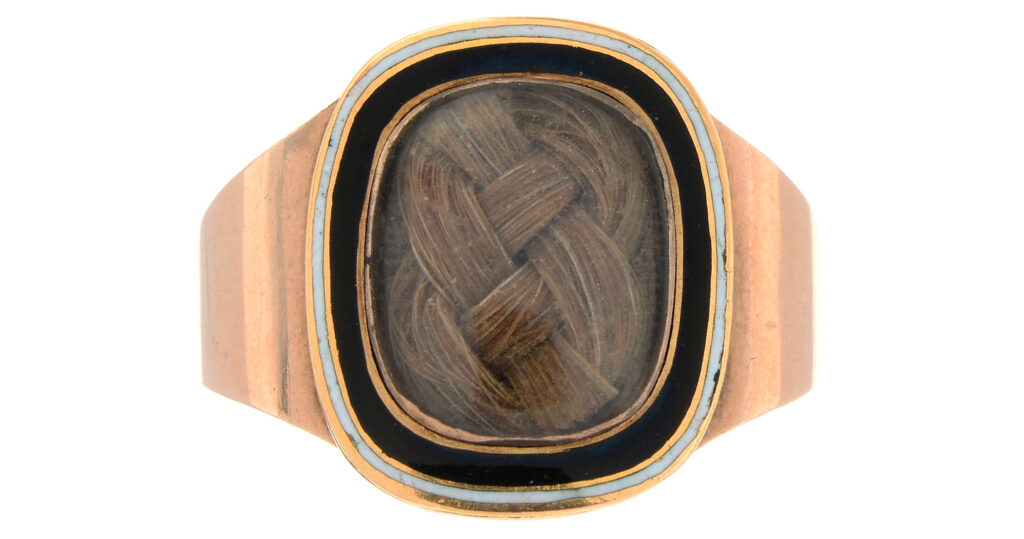1862 Pearl Forget-Me-Not Ring
This particular ring tells a tale that exemplifies the Victorian Era. It shows the different facets of society that relate to the social culture which defined the morals and culture of Western style.
Firstly, the forget-me-not is the most prominent symbol on the ring and it is the one that defines the sentiment. ‘Forget me not’ is not explicitly stated, of course, but the flower is presented – much of the dedications written, or inscribed, in memorial and sentimental jewels was relegated to the underneath of the bezel or the band. Other than this, the ubiquitous ‘in memory of’ survived to be prominent as a symbol in itself, usually written in black enamel.
Which is where we have to understand how the hidden hair memento on the back also enhances the meaning of the symbol on front. As the shield/signet style was popular in the latter 19th century, displaying the hairwork was not as prominent as it had been in the earlier 19th century. The symbol defines the sentiment and the hairwork underneath keeps the loved one’s hair close to the wearer at all times and it doesn’t explicitly state that the wearer is showing overt affection for a loved one. The forget-me-not may as well be a decoration, rather than a dedication.
WIth its use of perils, the ring also sends off signals as to its sentiment. The pearl, while utilised for ‘tears’ when in a mourning context was also a sign of affluence and love. This piece, while dedicated to someone for the use of mourning, doesn’t have the heavy, bold, black enamel that would immediately denote it to be a mourning piece.
Further Reading:
> Alexander Schevn, Heart, Diamond, Forget-Me-Not Mourning Ring
> Symbolism Sunday, The Forget-Me-Not
> Symbolism Sunday: The Acanthus







